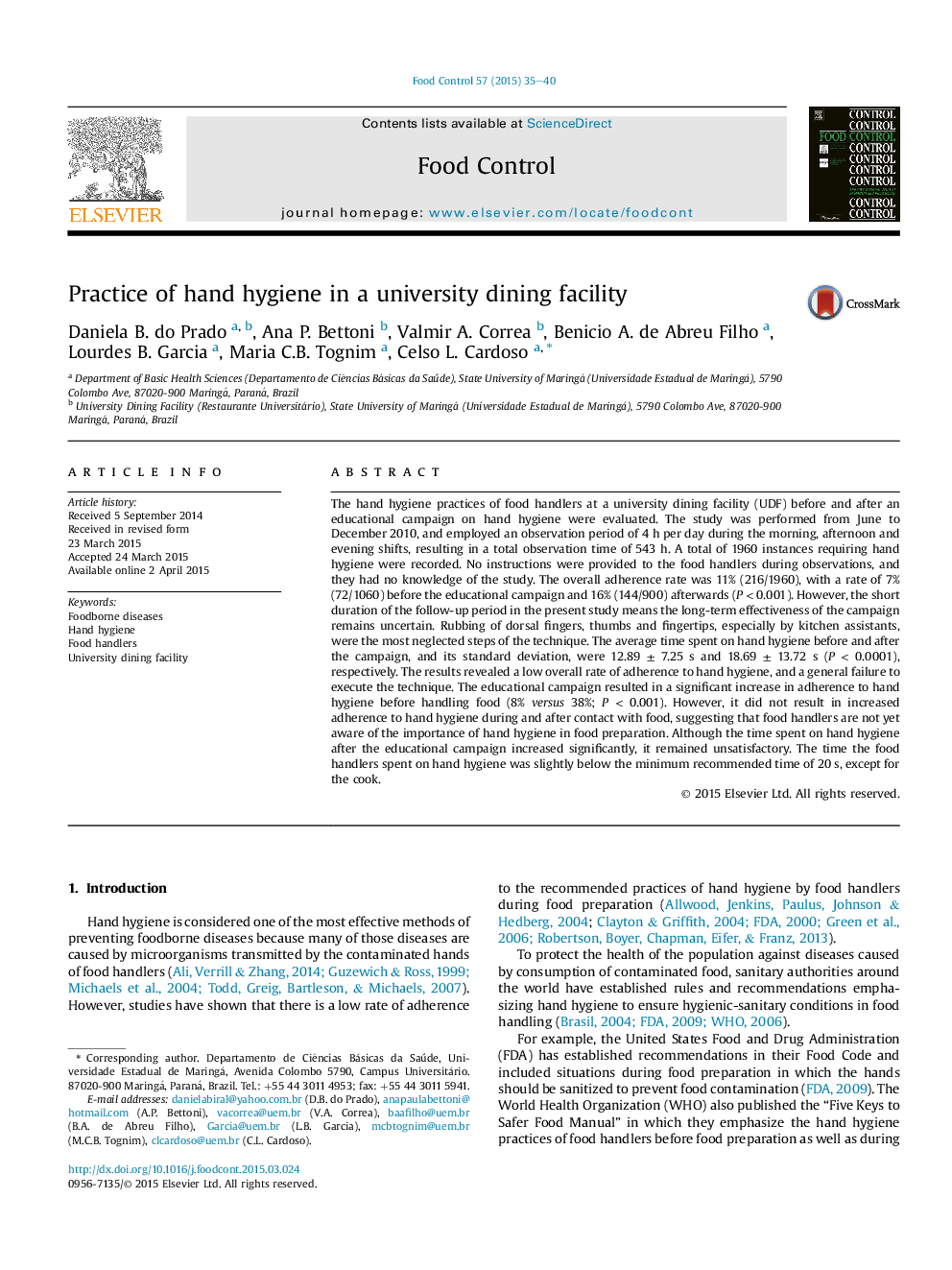| کد مقاله | کد نشریه | سال انتشار | مقاله انگلیسی | نسخه تمام متن |
|---|---|---|---|---|
| 6390675 | 1628405 | 2015 | 6 صفحه PDF | دانلود رایگان |
- The hand hygiene habits of food handlers were observed before and after an educational campaign.
- The educational campaign promoted an increase in the overall rate of adherence to hand hygiene practice.
- It is important to encourage hand hygiene practices in food service facilities.
The hand hygiene practices of food handlers at a university dining facility (UDF) before and after an educational campaign on hand hygiene were evaluated. The study was performed from June to December 2010, and employed an observation period of 4 h per day during the morning, afternoon and evening shifts, resulting in a total observation time of 543 h. A total of 1960 instances requiring hand hygiene were recorded. No instructions were provided to the food handlers during observations, and they had no knowledge of the study. The overall adherence rate was 11% (216/1960), with a rate of 7% (72/1060) before the educational campaign and 16% (144/900) afterwards (P < 0.001). However, the short duration of the follow-up period in the present study means the long-term effectiveness of the campaign remains uncertain. Rubbing of dorsal fingers, thumbs and fingertips, especially by kitchen assistants, were the most neglected steps of the technique. The average time spent on hand hygiene before and after the campaign, and its standard deviation, were 12.89 ± 7.25 s and 18.69 ± 13.72 s (P < 0.0001), respectively. The results revealed a low overall rate of adherence to hand hygiene, and a general failure to execute the technique. The educational campaign resulted in a significant increase in adherence to hand hygiene before handling food (8% versus 38%; P < 0.001). However, it did not result in increased adherence to hand hygiene during and after contact with food, suggesting that food handlers are not yet aware of the importance of hand hygiene in food preparation. Although the time spent on hand hygiene after the educational campaign increased significantly, it remained unsatisfactory. The time the food handlers spent on hand hygiene was slightly below the minimum recommended time of 20 s, except for the cook.
Journal: Food Control - Volume 57, November 2015, Pages 35-40
